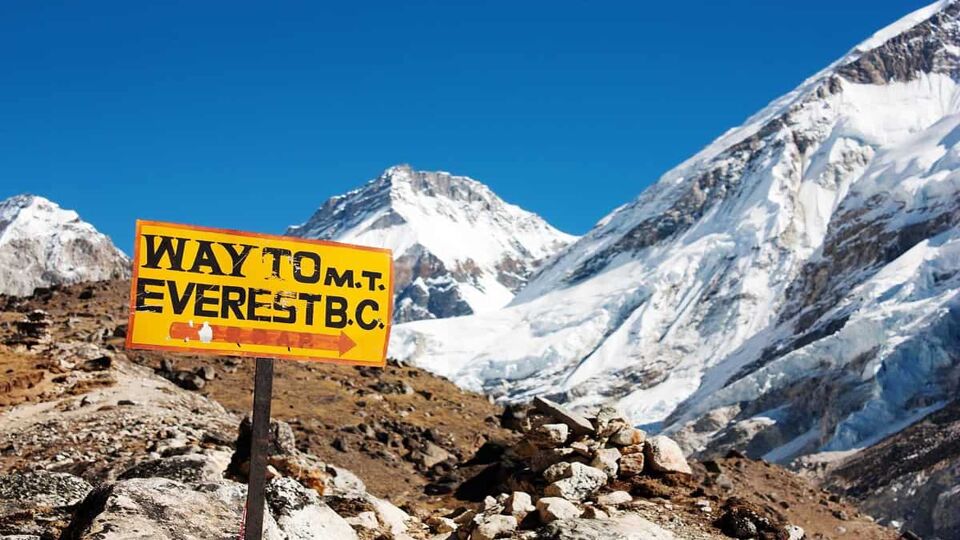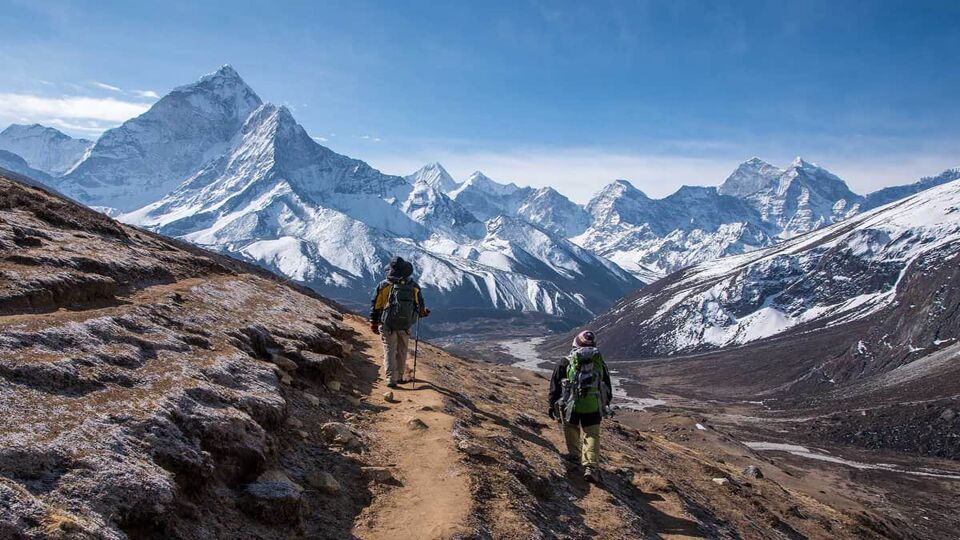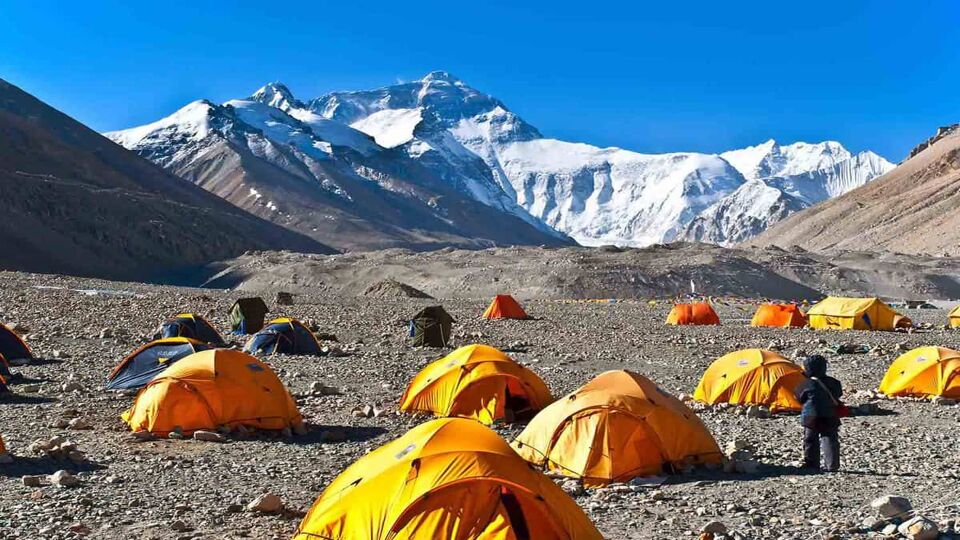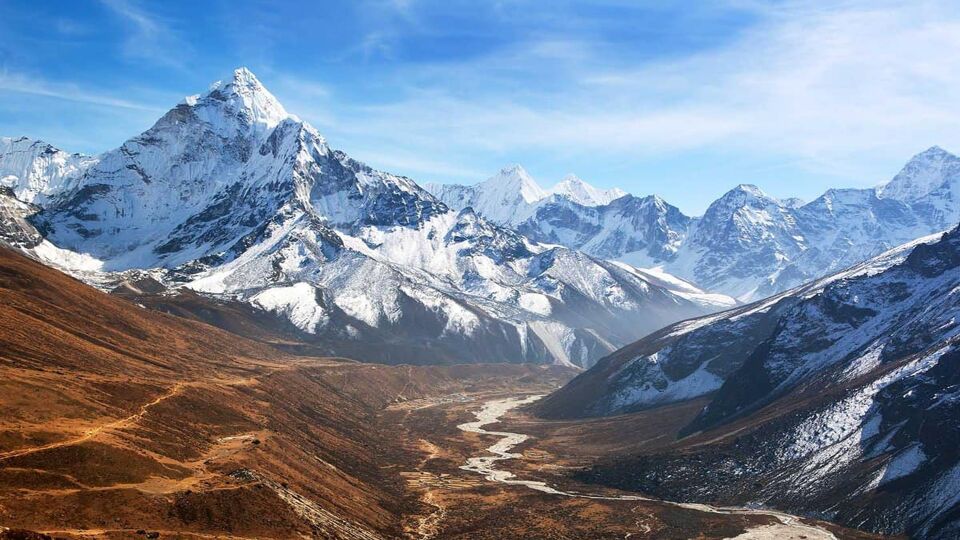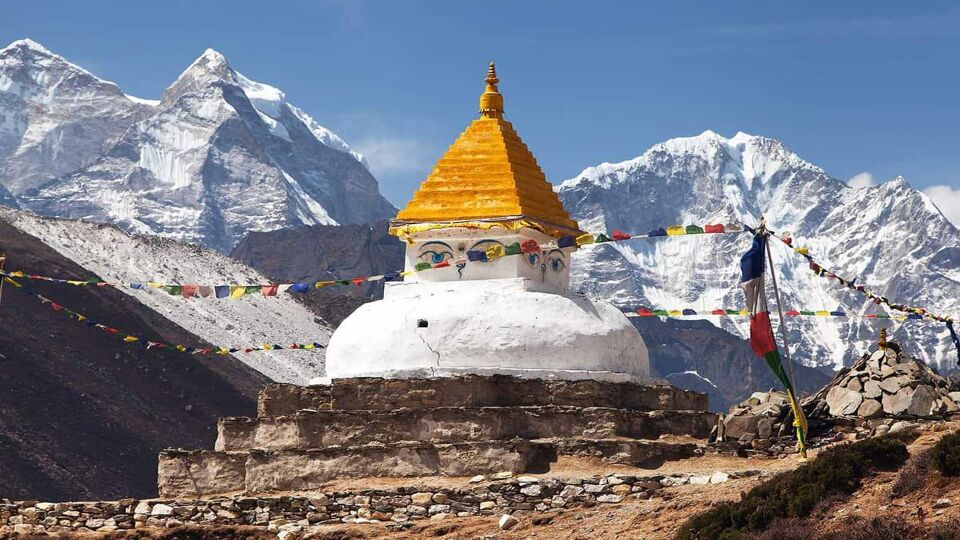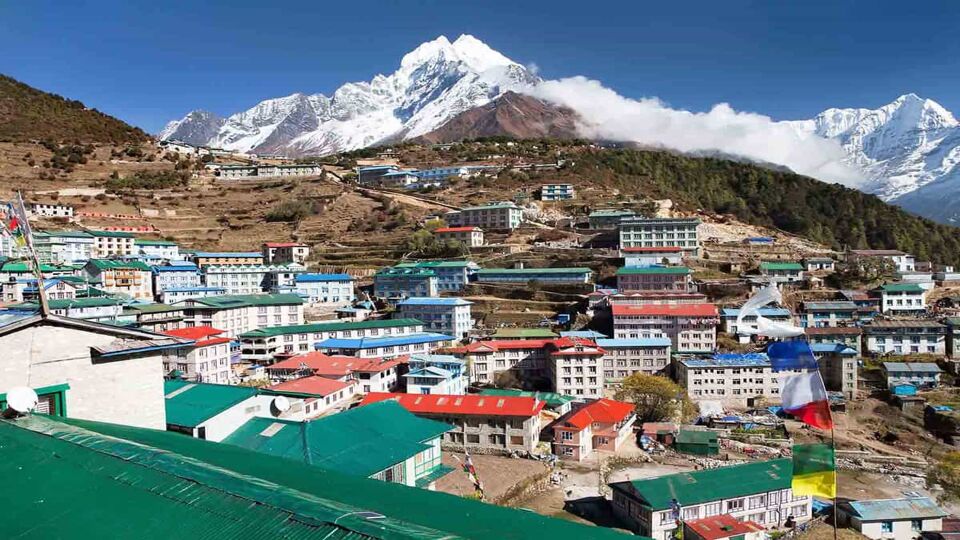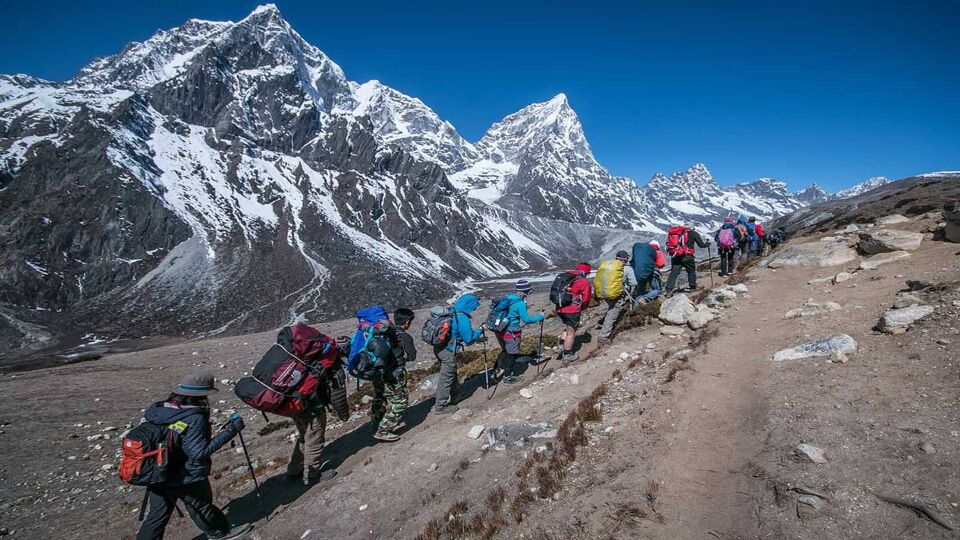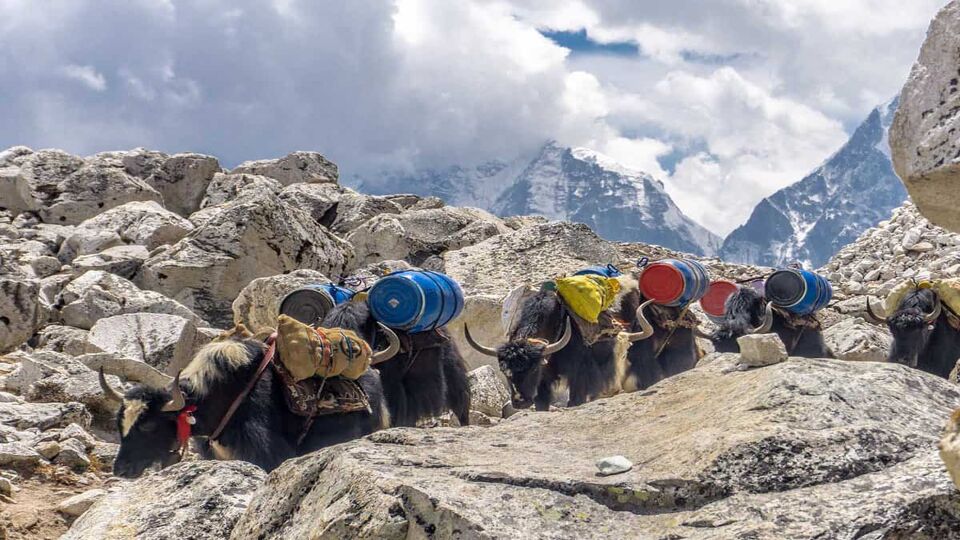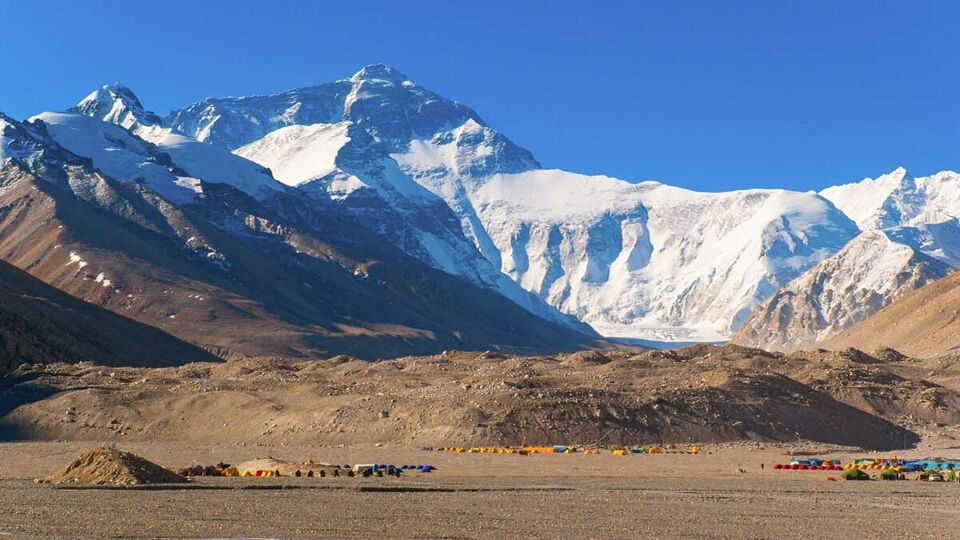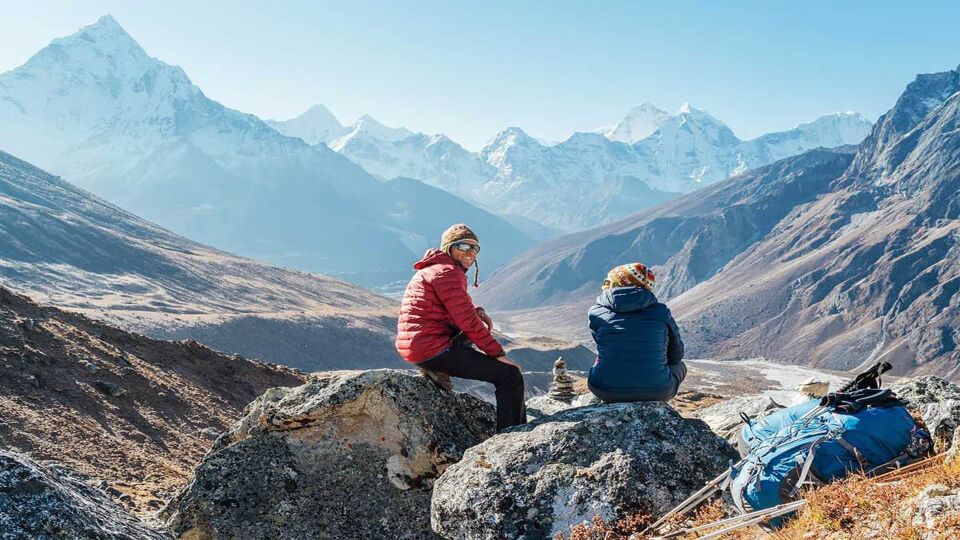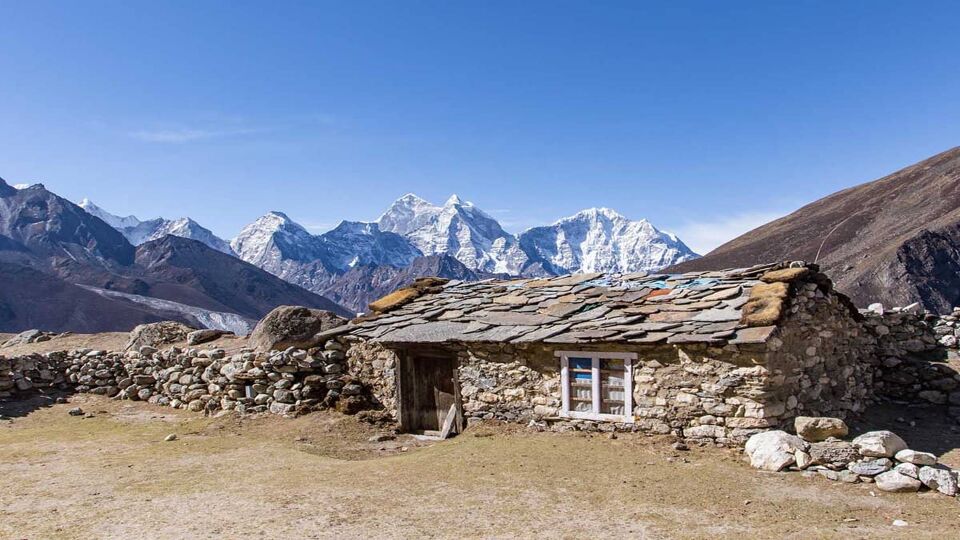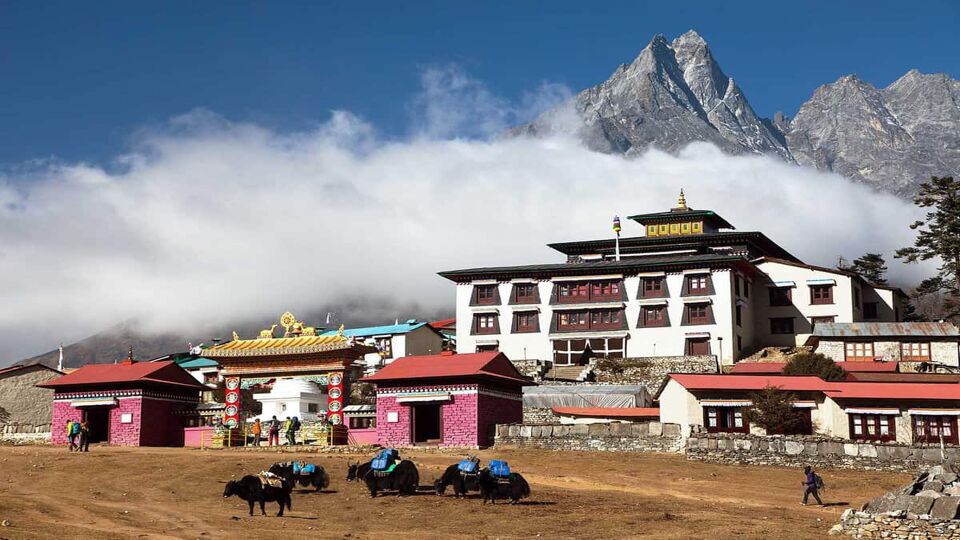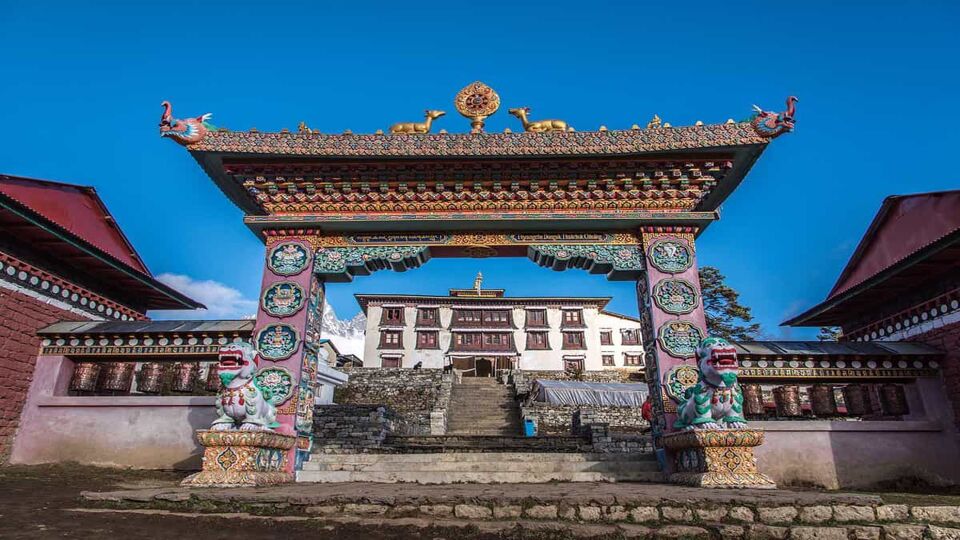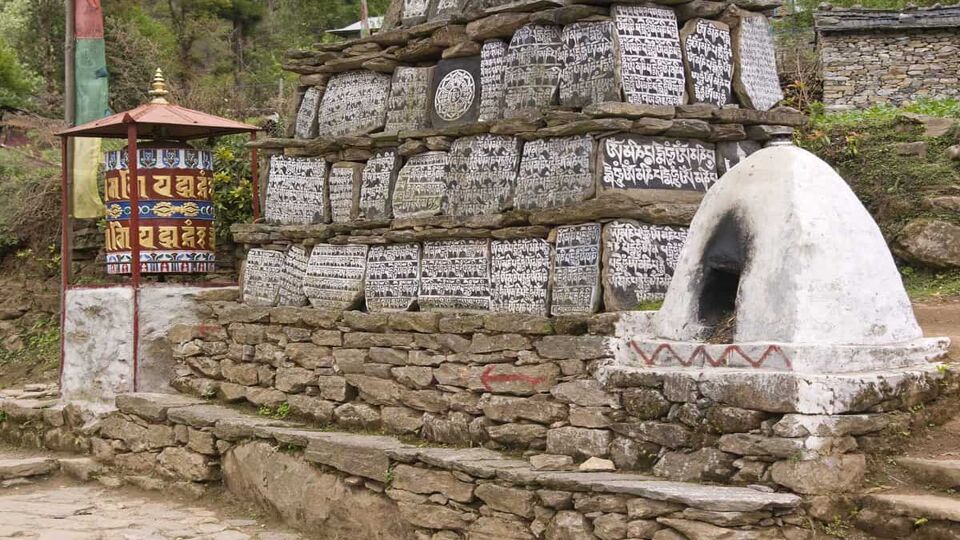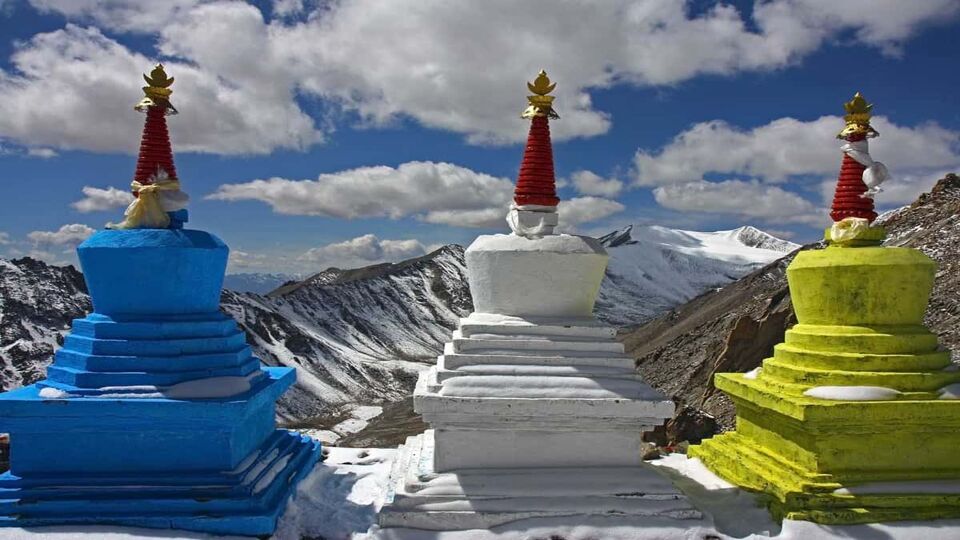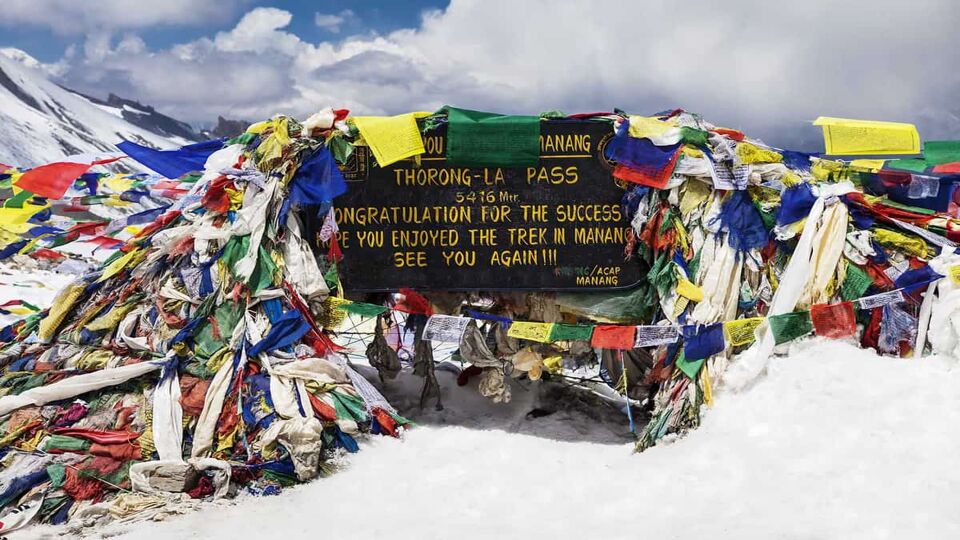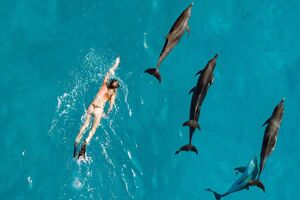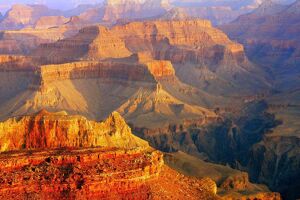
Travel bucket list idea:
Climb Mount Everest to base camp [Helicopter flight]
Mount Everest, East Region, Nepal
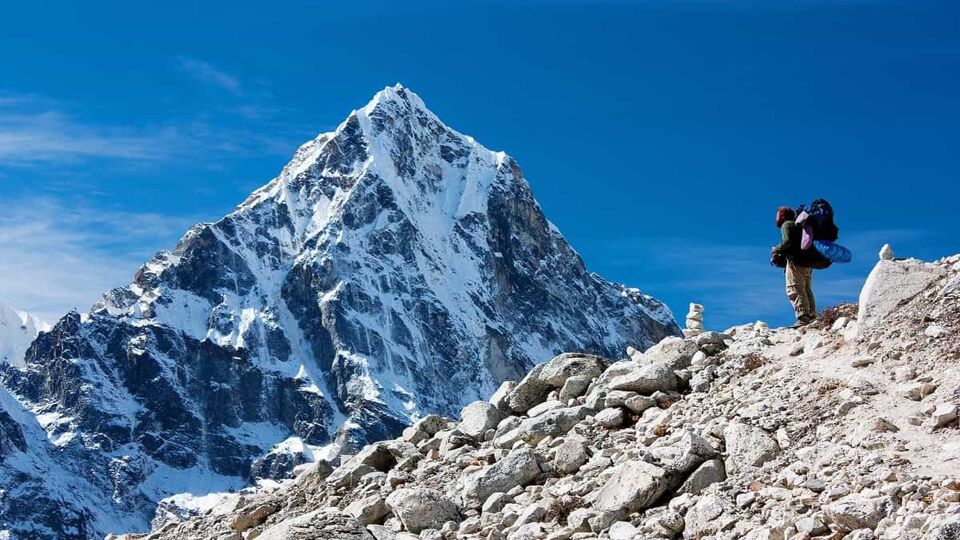
Reaching Everest Base Camp is one of the world’s great trekking achievements.
The classic two-week trail follows in the footsteps of famous Everest summiteers, and takes in Buddhist temples and stupas, the bustling town of Namche Bazaar and numerous poignant memorials to climbers who’ve never returned.
You’ll be able to stand where the summit expeditions start, looking across to the terrifying Khumbu Icefall, but don’t expect to see the top of Everest from Base Camp. Don’t come expecting mountain solitude though – this will always be a busy yet beautiful trail.
It’s exhausting yet totally exhilarating, and the reward is the awe-inspiring view of the world’s highest mountain from the relatively small (5,545m) peak of Kala Pattar.
Take a helicopter instead
If you don’t the time, energy or enthusiasm for the hike, you can take a scenic helicopter flight to base camp. The four-hour trip also includes stops at special viewpoints offering the best views of Everest. The operator will pick you up from your hotel in Kathmandu. It’s not cheap though – at around £1,000pp.
Logistics
Getting there & doing it
Trekkers fly into Lukla from Kathmandu and stay at a series of teahouses or campsites en route. The two-week trek includes rest days to acclimatise to the altitude at Namche Bazaar and Pheriche.
Sensible trekkers go with well-known international tour operators offering packages for group or individual treks; local trekking agencies can also arrange all your requirements in Kathmandu or Lukla. Basic accommodation en route is in small tea-houses. If you’re trekking in a group or have porters, send someone on ahead to reserve the best beds.
You don’t have to sleep rough. World Expeditions offers exclusive eco-friendly campsites, and Himalayan Expeditions has a less strenuous lower altitude trek with more comfortable accommodation but equally stunning views.
Make the most of the views en route from the Everest View Hotel in Syangboche, the bakery near the imposing Buddhist monastery at Tengboche, and the trailside teahouse at Orshe, near Pheriche.
Be prepared for long waits in bad weather at Lukla – it’s a notorious airstrip and accidents have happened. Expect delays then timely flights will be a bonus.
Other routes
An additional two days’ arduous trekking takes in Gokyo Ri, possibly the best vantage point for Everest views, via the Cho La Pass and Ngozumpa Glacier.
Another alternative is to begin the walk from Jiri. Although useful for acclimatisation, the one-week trek to Lukla is a hard slog and it’s not a particularly attractive route.
Staying safe
Nepal is generally a friendly, safe country but there have been isolated incidents of attacks on lone trekkers.
If trekking alone, new regulations stipulate that you must take a government-registered guide or porter.
You’ll feel the altitude. Altitude sickness can occur above 3,000m. Recognise the symptoms, go slowly and drink plenty. If you’re suffering severe headaches or breathing difficulties, go down: it can be a killer. If you’re tired, climb Kala Pattar for Everest views rather than trudge to Base Camp.
When to do it
Monsoons leave clear, fresh air behind them, making October and November the best time to visit. March to May is also good, but busy with summit expeditions early on.
Base Camp and Kala Pattar can be bleak and hostile between December and February, and the approach to them is wet and muddy during the monsoon months (June to September).

